Abstract
The effect of red light on the aging progression of the bean (Phaseolus vulgaris L.) hypocotyl segment unit was examined in relation to dwarfism using Kentucky Wonder (tall) and Masterpiece (dwarf) varieties. In both plants, red light promoted the elongation of younger zones and inhibited that of mature zones. The zone exhibiting maximum elongation was shifted to the younger zones by red light irradiation regardless of the plant type, but its extent was greater in the dwarf than in the tall. Thus, red light hastens both the beginning of elongation in the younger portion and its termination in the mature portion of the hypocotyl, particularly of the dwarf plant. These red light responses in each zone of both the tall and dwarf hypocotyl units were reversed by subsequent exposure to far red light regardless of the duration and intensity of red light, thus indicating that the hastened aging progression of the hypocotyl by red light is mediated by phytochrome. However, there is no difference in the rate of decay of Pfr between the tall and dwarf hypocotyls.
The increased expression of bean dwarfism seems to result from a concerted action of red light upon the maturation of younger portions of the hypocotyls, which is more rapid in the dwarf than in the tall, and upon the elongation of the relatively matured portion, which is more severely inhibited in the dwarf.
Full text
PDF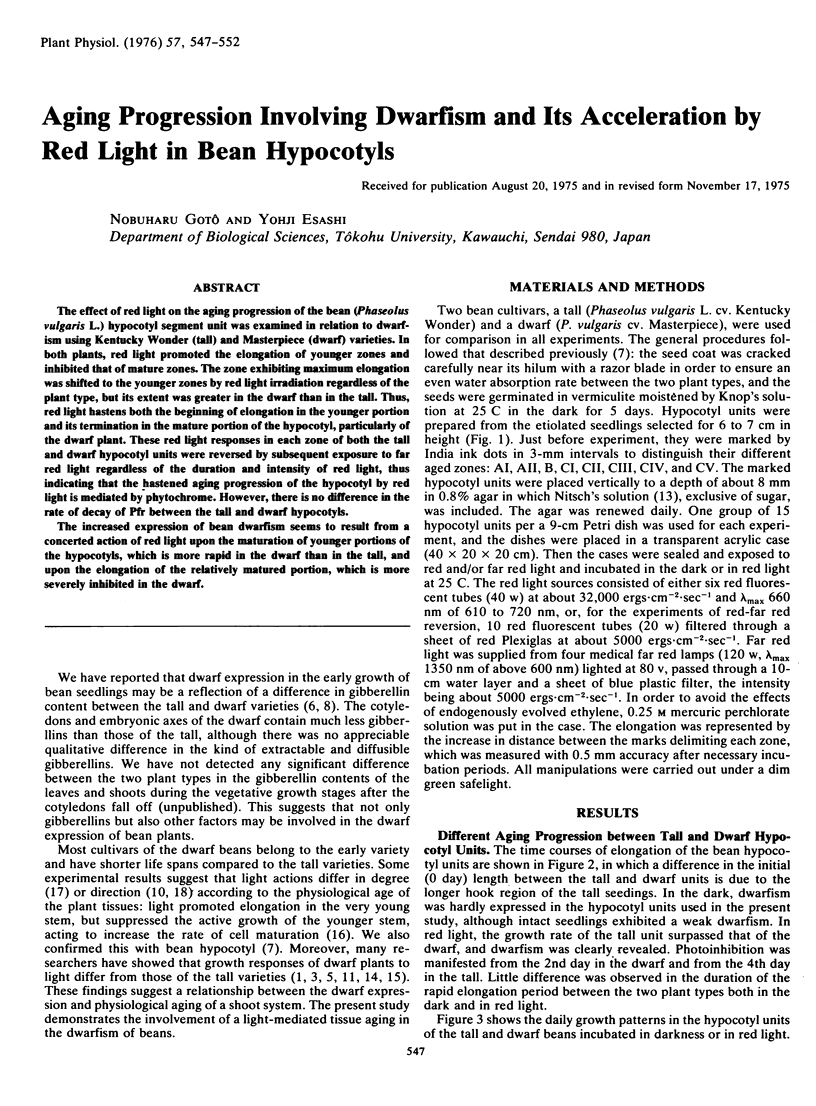
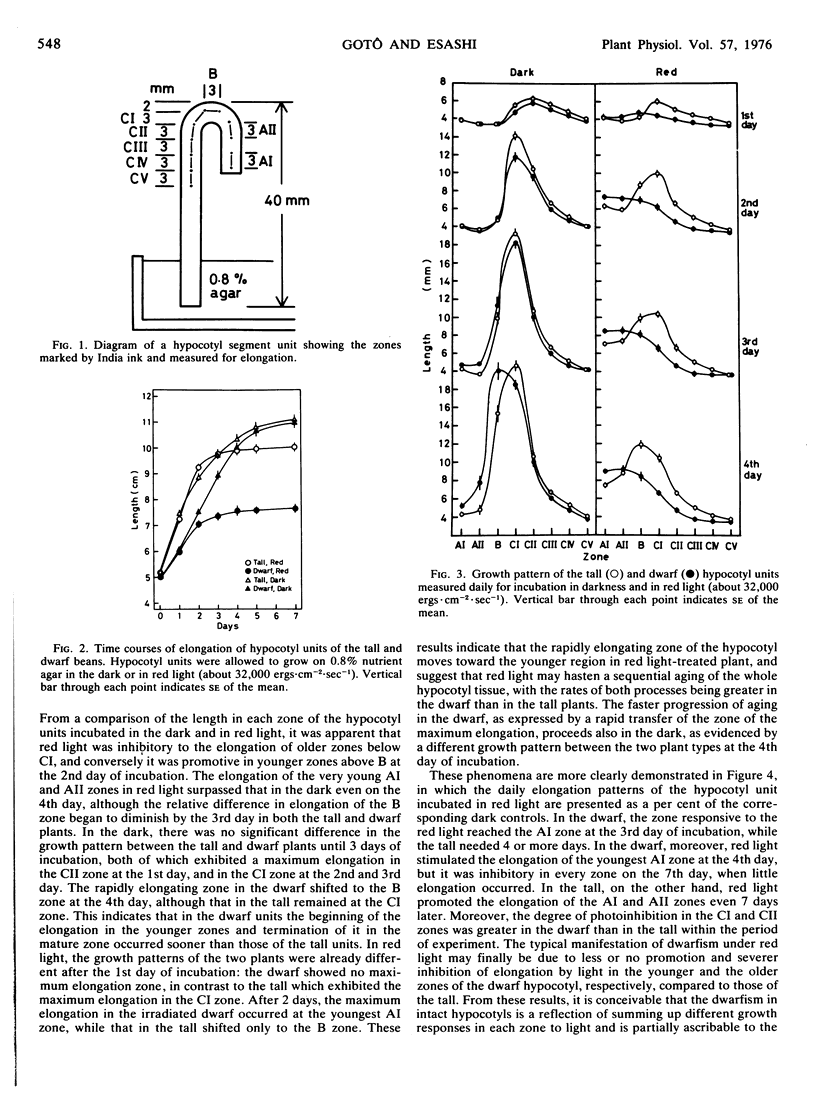
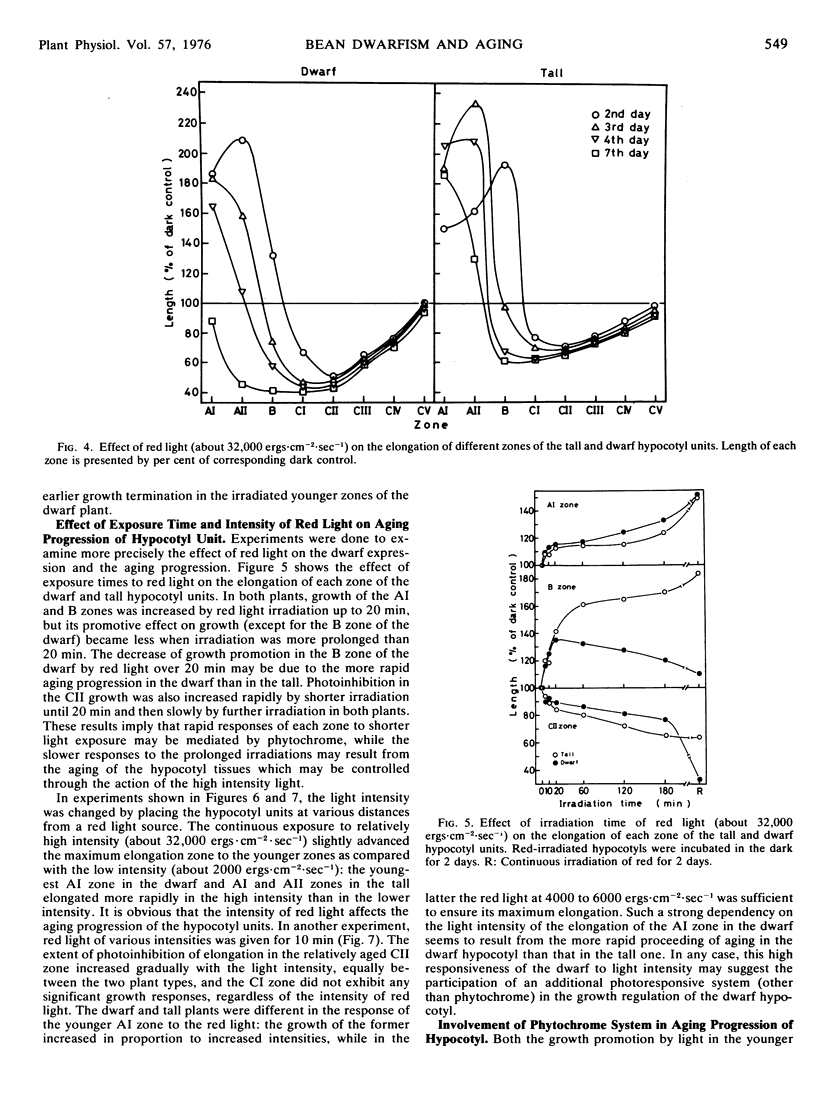
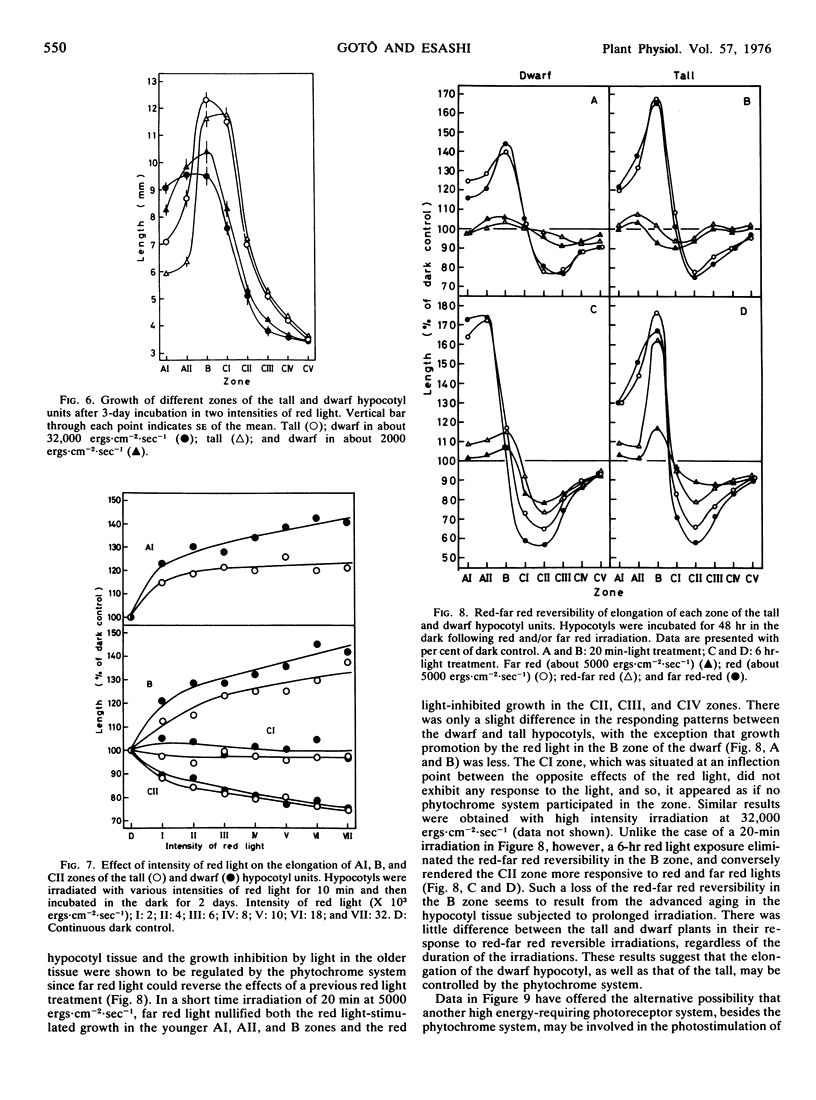
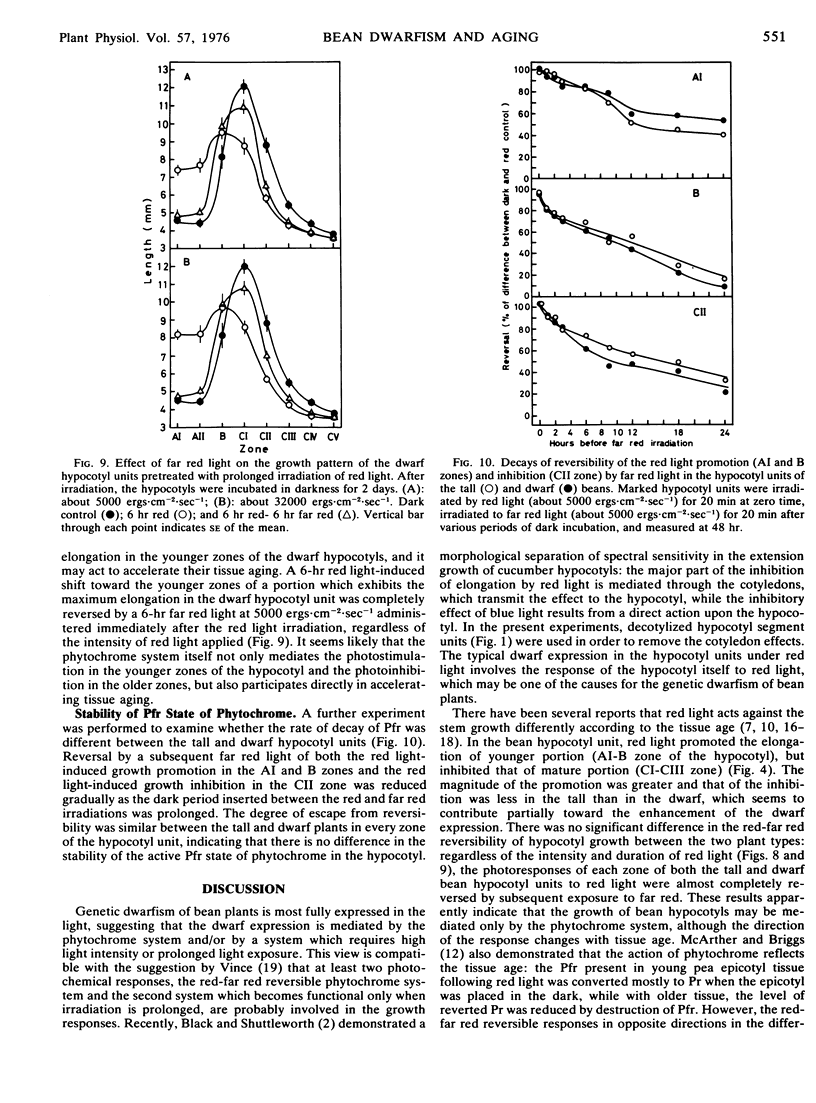
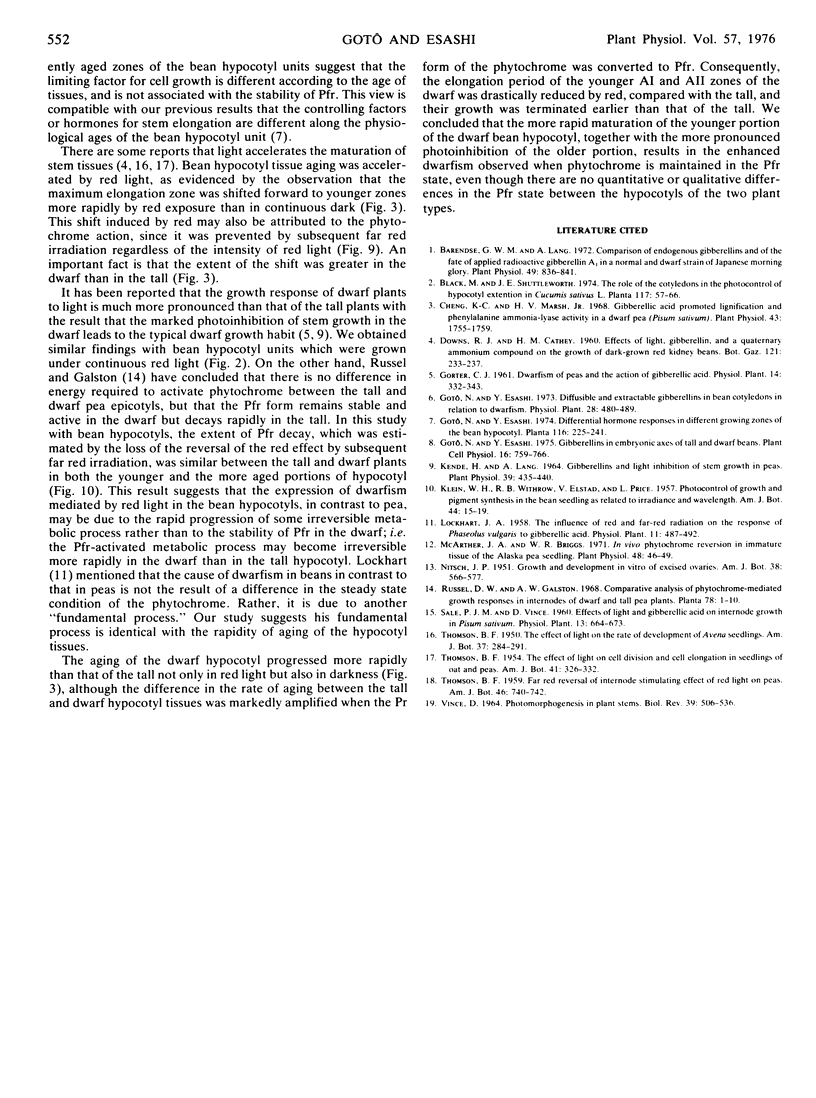
Selected References
These references are in PubMed. This may not be the complete list of references from this article.
- Barendse G. W., Lang A. Comparison of endogenous gibberellins and of the fate of applied radioactive gibberellin a(1) in a normal and a dwarf strain of Japanese morning glory. Plant Physiol. 1972 May;49(5):836–841. doi: 10.1104/pp.49.5.836. [DOI] [PMC free article] [PubMed] [Google Scholar]
- Cheng C. K., Marsh H. V. Gibberellic Acid-Promoted Lignification and Phenylalanine Ammonia-lyase Activity in a Dwarf Pea (Pisum sativum). Plant Physiol. 1968 Nov;43(11):1755–1759. doi: 10.1104/pp.43.11.1755. [DOI] [PMC free article] [PubMed] [Google Scholar]
- Kende H., Lang A. Gibberellins and Light Inhibition of Stem Growth in Peas. Plant Physiol. 1964 May;39(3):435–440. doi: 10.1104/pp.39.3.435. [DOI] [PMC free article] [PubMed] [Google Scholar]
- McArthur J. A., Briggs W. R. In vivo phytochrome reversion in immature tissue of the alaska pea seedling. Plant Physiol. 1971 Jul;48(1):46–49. doi: 10.1104/pp.48.1.46. [DOI] [PMC free article] [PubMed] [Google Scholar]


